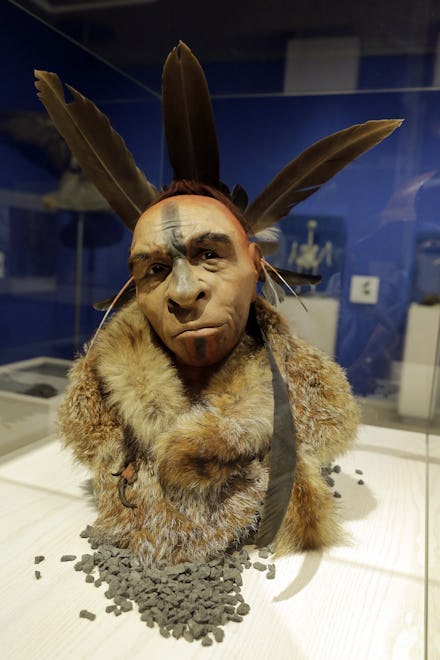Scientists Finally Figured Out When Humans Started Having Sex With Neanderthals

The news: There's a good chance as much as 2% of your DNA comes from neanderthals. That's because your ancestors weren't picky.
Following the tireless work of scientists who are maybe a little too interested in the subject, we have a good idea of when the first human ancestor decided to get it on with a neanderthal.
How we know: In 2008, an ivory carver near the settlement of Ust'-Ishim in western Siberia found a bone sticking out of sediments while fossil hunting along the Irtysh river. The bone turned out to be a femur, which radiocarbon dating put at 45,000 years old.
Using the femur, scientists Svante Pääbo and Janet Kelso of the Max Planck Institute for Evolutionary Anthropology in Leipzig were able to sequence his genome in order to give an estimation of the first neanderthal-human union.
Study co-author Janet Kelso told Live Science the femur belonged to "the earliest directly dated modern human outside of Africa and the Middle East, and the oldest modern human [genome] to have been sequenced."
"From this we conclude that the population to which the Ust'-Ishim individual belonged diverged from the ancestors of present-day Europeans and Asians before, or at around the same time as, these groups diverged from one another," Kelso said.
Previous estimates have traced our neanderthal legacy back to anywhere from 37,000 to 86,000 years ago. About 10,000 to 20,000 years after first mating with humans, neanderthals went extinct.
Other findings: We learned about more than just boning from this guy's bone. His diet, it seems, included C3 plants (a group that includes beans, wheat, garlic and pears) as well as animals that ate such plants. He may have also dined on freshwater fish.
There are also clues about just how humans arrived in Siberia in the first place. While it was previously thought that some of our ancestors migrated there from the south around the coast, this new discovery has thrown previous theories about neanderthal migration patterns into doubt.
So not every takeaway is super exciting for those not actively studying our ancestors. But unlocking when neanderthals' influence on our genome began is a first step to learning a lot more about how we lived — and what we adapted to — tens of thousands of years ago.
h/t Live Science